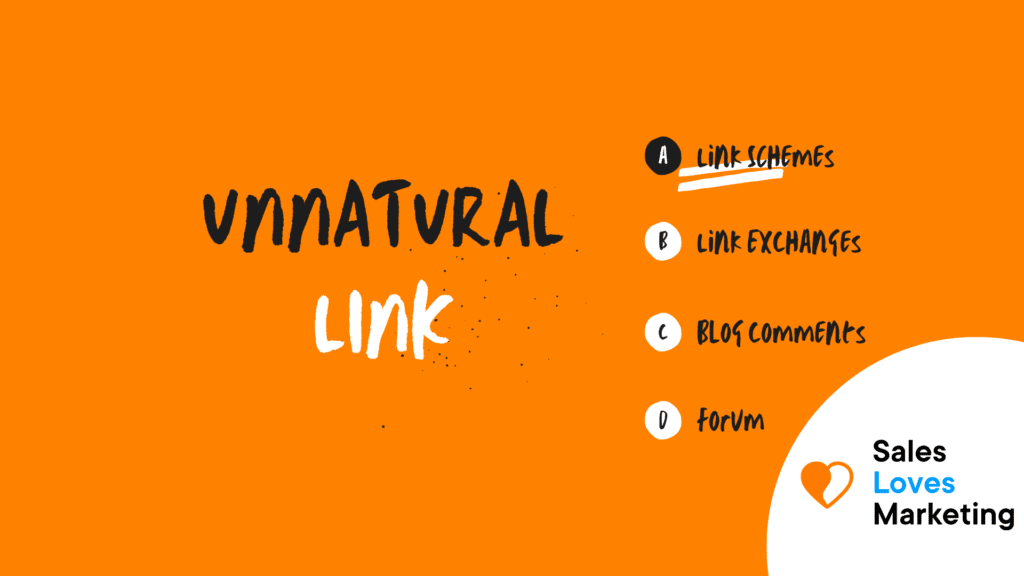What Are Unnatural Links?
Unnatural links are those links created artificially. They are usually used to manipulate websites’ ranking in search engines and, when detected by search engines, can cause penalties. An example of unnatural links would be links created by spammers or purchased links.
Examples Of Unnatural Links
There are several types of unnatural links that, when used, can result in penalties. Among the most well known are:
- Link Schemes such as link farms or private blog networks.
- Low-Quality Directories and Bookmarking Sites
- Link Exchanges
- Injected Links created with automated software and scripts to place links without webmasters’ permission.
- Sitewide Links
- Widgets (if used, it is recommended to use nofollow to avoid penalties)
- Press Releases and Syndicated Content
- Paid Links included within sponsored blog posts, banner ads, text ads, etc. (To avoid penalties it is recommended to attach the nofollow, sponsored, and UGC attributes to all links).
- Blog Comments
- Forums
- Redirected Domains
How To Find Unnatural Links On Your Website?
A quick and easy way to find out if there are unnatural links in a website is by following these steps:
Use tools like SEMrush, Ahrefs, Majestic, Google Search Console, etc.
To detect unnatural links, different tools facilitate the task. Most of them offer the function of performing a link profile analysis that can be exported in a spreadsheet. Some of the best tools are:
- SEMrush: this well-known tool has the “Backlinks Audit” function, which allows you to perform a link profile audit.
- Ahrefs: with this SEO tool, you can obtain a profile of inbound and outbound links.
- Google Search Console: It is a free tool that Google makes available; with it, you can analyze the links’ quality.
- Cognitive SEO: with this tool, you can filter links by quality; with this filter, it is easier to detect toxic links.
Performing a backlink audit
Once you have created the spreadsheet with the data of the link profiles found on the website, you must analyze and decide which ones to keep and which ones to disavow.
Sort the backlinks
There are several ways to do this. For example, in the case of the SEMrush tool, you can order them from the highest toxicity score to the lowest. Everything will depend on the type of analysis you want to carry out.
Manually review the websites
Once the backlinks are sorted, a manual review is performed, which consists of opening each link to detect if there are unnatural links. This search can help to detect patterns that otherwise cannot be seen.
With this information, a file with the list of links to be disavowed is created, and the moment when it will be done is planned.
Upload deauthorization file
Once the file with the unnatural links to be disavowed has been created, it is uploaded to Google Search Console. To follow up, you can place a note in Google Analytics to observe the website traffic’s organic variants.
Why Does Google Penalize Unnatural Links?
The search engine Google wants to offer users quality and useful content to satisfy their information needs.
That is why Google, the most used search engine in the world, closely monitors all activities performed through it to discover if there is manipulation or alteration of search rankings. If it detects that this happens, it takes action against the website by penalizing it.
As Unnatural Links are a way to manipulate rankings for keywords in the SERPs, they can be subject to Google’s penalties for being against the Webmaster Guidelines. Their use can result in manual restrictions such as causing a website to have little or no organic web visibility.
Get started yourself with SEO with Semrush; all-in-SEO tool (They offer an free 7 day trial).
